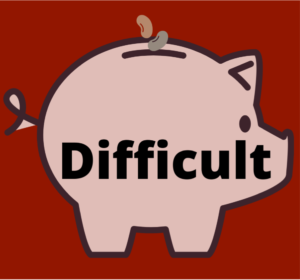
Spaghetti Squash
When cooked, spaghetti squash resembles spaghetti. It’s good with marinara sauce or seasoned simply with salt and pepper.
|
N/A |
|
Cucurbita pepo |
|
Intermediate to Difficult |
|
Difficult |
|
5 years if properly cured, cleaned and stored |
|
Annual |
|
10-14 days |
|
48-60” spread and 10-12” high |
|
3-4 LB |
|
Full Sun |
|
100 days |
|
April and May |
|
No |

Growing Tips


When to Start
Spring: After the danger of frost has passed. (May 1-July 1 for GA) You can also start seedlings indoors about 2-4 weeks before your planting date.
How to Start
Sow directly into the garden after the danger of frost has ended (May 1 for Jefferson, GA). Summer and winter squash are commonly planted in hills about 1 inch deep. This isn’t necessary but can be helpful in pest management. Usually, only 4 to 5 seeds per hill are plenty, thinning down to 2 or 3 plants per hill once the seedlings have developed their true leaves.
Hills and rows of summer squash should be approximately 3 to 4 feet apart while winter squash should be spaced approximately 4 to 5 feet apart with 5 to 7 feet between rows and with the hills spaced about 3 feet apart.
Care
Squashes require full sun, fertile soil, and sufficient moisture. They are heavy feeders, meaning they use up lots of nutrients. Use well-composted material and mix it into the soil before planting. Side dress with more well-composted material or use a fertilizer that is designed for squashes as the season progresses. Use cardboard, mulch, or landscape fabric to reduce weeds.
Interplanting Tip
To help fix nitrogen in the soil while the squash is growing, experiment with using interplanting. Pole green beans, pole lima beans, black-eyed peas, or even the flower butterfly pea, are excellent to try. These plants will fix nitrogen in the soil. Set up trellises intermixed with the squash to allow one of these other crops to climb up.
When to Harvest
- Harvest winter squashes on a dry day when the skins are hard, after the plants have died back, and before the first frost. The spaghetti squash should be golden yellow.
- To slow decay, leave an inch or two of stem on the winter squash when harvesting them.
- To harvest winter squash, cut the fruit off the vine carefully with a sharp knife or pruners; do not tear. Be sure not to cut too close to the squash; a liberal amount of stem (3 to 4 inches) will increase the squash’s keeping time.
Pest Management: Vine Borers and squash bugs
Consider covering the plants with mesh netting and hand pollinating to keep squash vine borers and squash bugs from getting into crops. If this isn’t practical, try using companion plants to attract beneficial predators that eat pests or trap crops to keep pests out of the squash are good pest management techniques. I experimented with planting radish inter mixed with my zucchini. It did seem to help deter squash bugs. I didn’t have near the problems I normally do. Links are below.
Seed Saving

Isolation Distance
Separate varies of Cucurbita pepo by one mile or cage and hand pollinate.
Instructions
Squashes should be fully mature before harvesting. This is well past the eating stage. Harvest when skins are hard and leathery.
Store the unopened fruits for another 20 days before removing the seeds. This is because some squash family seeds increase in size and viability for 20 days after harvesting. After the 20-day waiting period has passed, cut the fruits open and remove the seeds to prepare them for storage.
Squash seeds can be fermented for higher germination and better disease resistance. (Don’t ferment seeds if they appear to have already naturally fermented while waiting in the wet fruit, as evidenced by the smell and appearance of the seeds and pulp).
Scoop the seeds—together with the pulp that surrounds them—into a jar or bowl with a little water (about half as much water as seeds and pulp). Store this seed/pulp mixture in a warm place (75 to 85º F) for 1½ to 5 days.
Fermentation will be evidenced by bubbling and/or by the formation of a white mold on the surface of the mixture. As soon as the bubbling or mold has been evident for a day or so, Remove the seeds that float and pulp. Viable (good) good seeds will sink to the bottom. Pour the viable seeds into a colander.
Whether you’ve fermented the seeds or not, rub them underwater between your fingers gently but thoroughly while cleaning them, to remove the naturally occurring gel from their coats. Dry the cleaned seeds on a shiny surface (they will stick to paper) until they are brittle.
Features
- Spaghetti squash is an heirloom winter squash. An excellent and nutritional substitute for pasta. It can be roasted and seasoned to tasted or topped with marinara sauce.

- While it is not necessary to grow squashes on hills, it is beneficial. The hills are about the size of small pitcher mounds. With hills, the soil will warm more quickly and the seeds will germinate faster. It also helps with drainage and pest control. (Almanac.com)
- Squashes are what are called ‘heavy feeders.” This means they use up lots of nutrients so you have to replenish the nutrients in the soil. Use a water-soluble fertilizer that is designed for squashes. When it is water-soluble the nutrients are immediately available for the plant to take them up. Fertilizer designed for vegetables is better because it is designed to help the plant produce fruit rather than excessive foliage.
- Just remember too much of a good thing is a bad thing. Over-fertilizing the squash will cause harm and make the plant unhealthy. Yellow leaves can be a sign of too much fertilizer. A good rule of thumb is to fertilize every 10 days. Just adjust depending on the nutrients in the soil and the health of the plant.
- For pest control, try planting companion flowers, or check out my zucchini pest prevention for more ideas. You can also experiment with flowers that MAY repel squash bugs.
